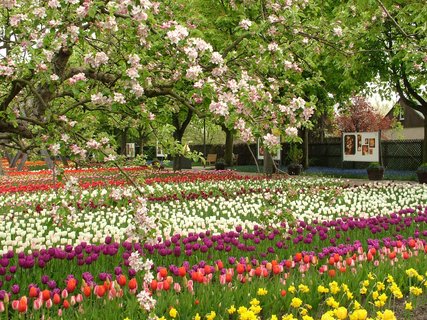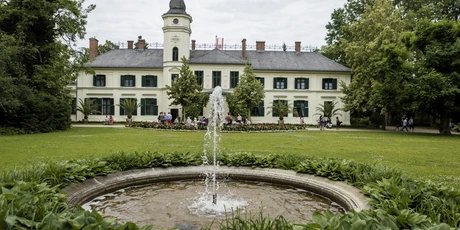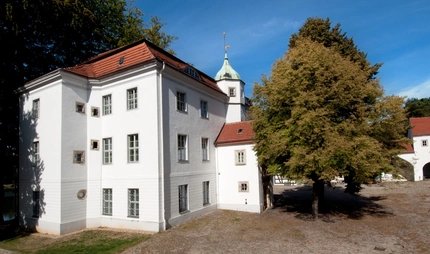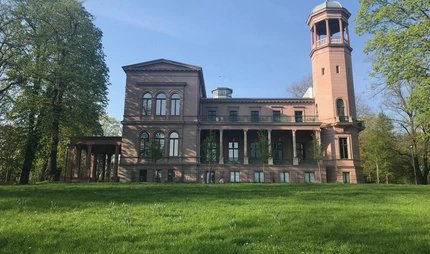
Schloss Britz and the Gutspark
The pearl of Neukölln
In the south of Neukölln is Schloss Britz, where you can take in an exhibition or simply stroll through the palace grounds.
You’ll not only find cultural diversity in the borough of Neukölln itself, but also at Schloss Britz. Formally a manor houses, it now contains an exhibition on how people lived in the Gründerzeit, Germany’s late 19th century industrial expansion, and is the venue for readings and concerts. Its park is a beautiful place for a stroll and it was listed as a protected building in 1971.
The history of Schloss Britz
In 1699 the Britzke family sold their estate to the electors of Prussia for a price of 30,000 thalers. The royal chief minister Samuel von Chwalkowski replaced the half-timbered manor house with a two-storey stone building. The interior rooms were redesigned in the years following 1770 by King Friedrich II’s minister Count Ewald Friedrich von Hertzberg, who was also responsible for the beginnings of tourism at the house, establishing a library and picture gallery that attracted many visitors to Britz. In 1880, Julius Wrede converted it from the Baroque to the Neo-Renaissance style and added a tower.
After the Second World War, the manor house was used as a children’s home. It was restored in the 1980s and many items of furniture from the Historicist era were brought to the house. An permanent exhibition now features items such as a suite of walnut chairs, a grand piano and a leather wall hanging. There is also a restaurant on the site.
The Gutspark
This history of the park began in 1706 when the manor house was built. Designed as both a kitchen garden and a pleasure garden in the Baroque style, Germany’s first robinia tree was planted there in 1719. Inspired by Dutch gardens, it featured a goldfish pond, an orangery, a small wood and orchards. As the ownership of the estate changed hands, the garden gradually developed into a park, with meandering paths, exotic plants, a colonnade of lime trees, a fountain and a garden pavilion. Particularly noteworthy is the bronze copy of the famous statue of a milkmaid which the Russian sculptor Pavel Petrovich Sokolov created for the park of the Catherine Palace near St. Petersburg.
Since 1924, when it was sold to the city of Berlin, the 1.8-hectare park has no longer been under private ownership. In 1990 the park was listed as a heritage site and seven years later it won an award for its outstanding stewardship. It is also home to Berlin’s oldest ginkgo tree.
Contrasting styles: Schloss Britz and the modern housing estate
From life on the manor to modern architecture – right next to Schloss Britz is a UNESCO world heritage site. Named after its horseshoe shape, the Hufeisensiedlung was built from 1925 onwards as a social housing estate, and is clearly visible from the air.
Discover the Kiez

People in southern Neukölln love their Britzer Garten, which isn’t far from the palace: the park covers 90 hectares and has lawns, lakes, cafés and nature trails. Come and have a day out with your family.
Find out more about the city’s neighbourhoods with our Going Local Berlin app.
Opening hours
| Tuesday | |
|---|---|
| Wednesday | |
| Thursday | |
| Friday | |
| Saturday | |
| Sunday | |
| Monday |



